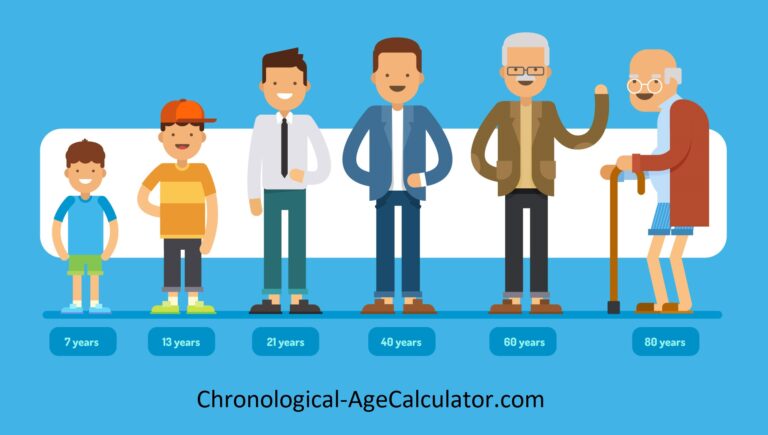How to Calculate Chronological Age for Occupational Therapy (ASQ-3 Guide)
In the world of pediatric occupational therapy, knowing exactly how to calculate chronological age for occupational therapy is essential. Whether you’re planning an intervention, selecting the right developmental test, or filling out progress reports, accurate age calculation ensures that evaluations align with the child’s expected developmental milestones.
This guide will walk you through everything from manual calculations and adjustments for prematurity to using powerful online tools like the super duper chronological age calculator and ASQ-3 screening. Let’s dive in.
What Is Chronological Age in Occupational Therapy?
Chronological age is the amount of time that has passed since a child’s birth. It’s typically expressed in years, months, and days and is a foundational factor in developmental assessments. Chronological age (actual age since birth) helps therapists
- Select the right ASQ-3 developmental screening test.
- Track motor, cognitive, and social milestones.
- Differentiate between chronological age and adjusted age (for premature infants).
A small miscalculation can lead to incorrect assessments, making precision essential.
Step-by-Step Age Calculation Methods
1. Using an Age Calculator Based on Birth Date
For quick and error-free results, use an age calculator by date of birth, such as the Super Duper Chronological Age Calculator.
Steps invclude.
- Enter the birth date (e.g., March 10, 2005).
- Enter the administration date (e.g., July 15, 2009).
- Get instant results (e.g., 4 years, 4 months, 5 days).
Best for: Non-premature children and quick checks.
2. Manual Calculation: Chronological Age Formula
If you prefer calculating manually, follow this chronological age formula:
Age = Administration Date – Birth Date
- Rules for Manual Calculation If the birth day is greater than the administration day, borrow 30 days from the month column.
- If the birth month is greater than the administration month, borrow 12 months from the year column.
Example Calculation
| Year | Month | Day | |
| Administration Date | 2009 | 7 | 15 |
| Date of Birth | 2005 | 3 | 10 |
| Age of Child | 4 | 4 | 5 |
- Result: 4 years, 4 months, 5 days
Another Example (With Borrowing)
| Year | Month | Day | |
| Administration Date | 2008 | 6 | 45 (15 + 30 borrowed) |
| Date of Birth | 2007 | 10 | 28 |
| Age of Child | 1 | 8 | 17 |
- Result: 1 year, 8 months, 17 days
3. Adjusting for Prematurity (ASQ-3 Guidelines)
For children born prematurely (before 37 weeks) and under 2 years old, adjust their age to account for early birth.
ASQ-3 Adjustment Rule
- Subtract weeks of prematurity from the chronological age.
Example: Child Born 7 Weeks Early
| Calculation Step | Year | Month | Day |
| Chronological Age | 1 | 7 | 47 (17 + 30 borrowed) |
| Subtract Prematurity (7 weeks = 1 month + 21 days) | – | 1 | 21 |
| Adjusted Age | 1 | 6 | 26 |
- Final Adjusted Age: 1 year, 6 months, 26 days
How to Use Age Results for ASQ-3 Screenings
Once you have the chronological or adjusted age, match it to the correct ASQ-3 questionnaire using the official chart:
| Age of Child (Adjusted if needed) | Use ASQ-3 Form |
| 1 mo – 2 mo 30 days | 2 Month Form |
| 3 mo – 4 mo 30 days | 4 Month Form |
| 5 mo – 6 mo 30 days | 6 Month Form |
| 7 mo – 8 mo 30 days | 8 Month Form |
| 9 mo – 10 mo 30 days | 10 Month Form |
| 11 mo – 12 mo 30 days | 12 Month Form |
| 1 yr 1 mo – 1 yr 2 mo 30 days | 14 Month Form |
| … | … |
Special Cases
If age falls between intervals (e.g., 9 months 15 days), use the lower or overlapping questionnaire (9 or 10-month ASQ-3).
Using Online Tools to Calculate Age Easily
Manual calculation can be time-consuming. Thankfully, there are online tools designed for accuracy and speed. These include
- Super Duper Chronological Age Calculator – Best for quick, precise results.
- Online Age Calculator by Date of Birth – Simple and free.
- Manual Calculation (Using ASQ-3 Cheat Sheet) – Best for prematurity adjustments.
These calculators automatically subtract the birth date from the current or custom date and give the exact age in years, months, and days.
Spotlight: Super Duper Chronological Age Calculator
One of the most widely used tools in clinical and school-based practice is the super duper chronological age calculator. This easy-to-use online calculator allows therapists to:
- Input the child’s date of birth
- Set the evaluation or administration date
- Get an immediate age result in the required format
Why It’s Useful:
- Reduces human error
- Saves time
- Automatically accounts for leap years and varying month lengths
This tool is highly recommended in pediatric settings and aligns with best practices in therapy planning.
“How Old Was I at This Date?” – Historical Age Calculation
Another useful feature for therapists is the ability to answer: how old was I at this date?
This becomes essential when:
- Reviewing developmental records
- Backdating evaluations
- Creating documentation for school or insurance purposes
Most advanced age calculators allow you to enter any past date to find out how old the child was at that time.
Pro Tips
- Always double-check the test date
- Use online tools when in doubt
- Confirm calculations with a second person if possible
Comparison Table: Manual vs Online Calculators
| Feature | Manual Calculation | Online Calculator |
| Speed | Slow | Fast |
| Adjustment for Prematurity | Requires effort | Often built-in |
| Accuracy | Human-dependent | High |
| Ease of Use | Requires practice | Simple and intuitive |
| Ideal For | Training & understanding | Quick clinical decisions |
Final Verdict
Calculating a child’s chronological age accurately is one of the most vital skills in occupational therapy. Whether you’re using the chronological age formula, a super duper chronological age calculator, or a basic age calculator by birth date, precision matters especially when choosing the right ASQ-3 screening form or interpreting developmental milestones.
Therapists who understand when to adjust for prematurity, avoid common mistakes, and use the right tools are better equipped to create effective, personalized therapy plans. Make accuracy your ally because every day counts in a child’s development.




